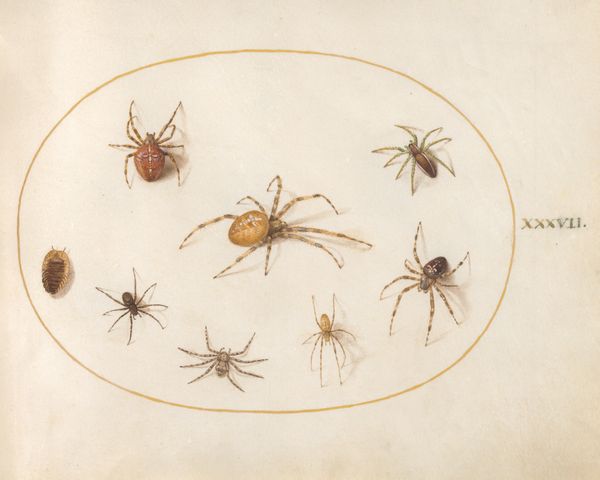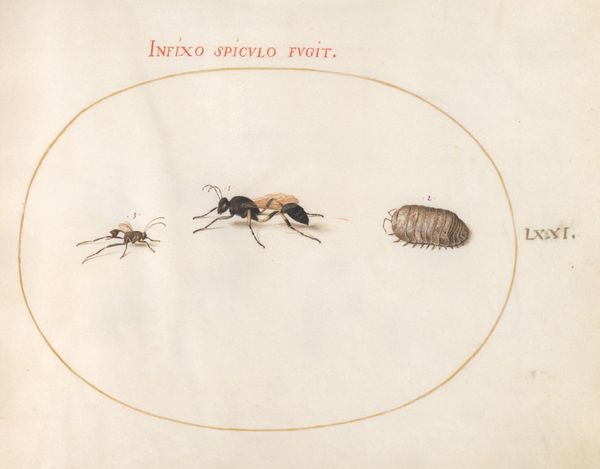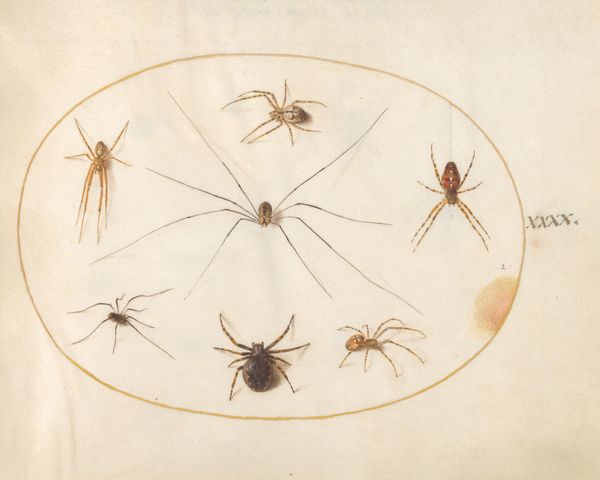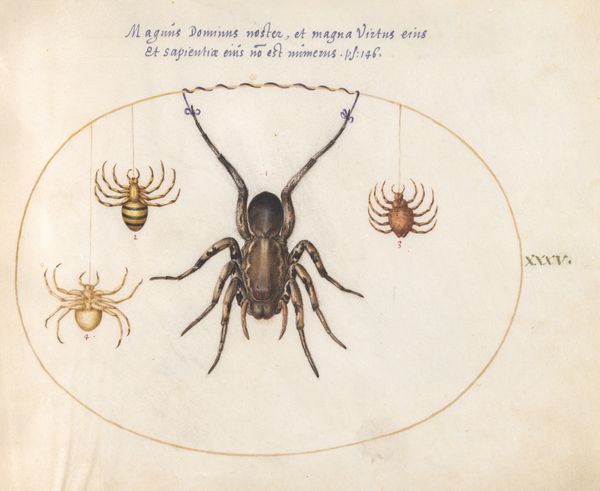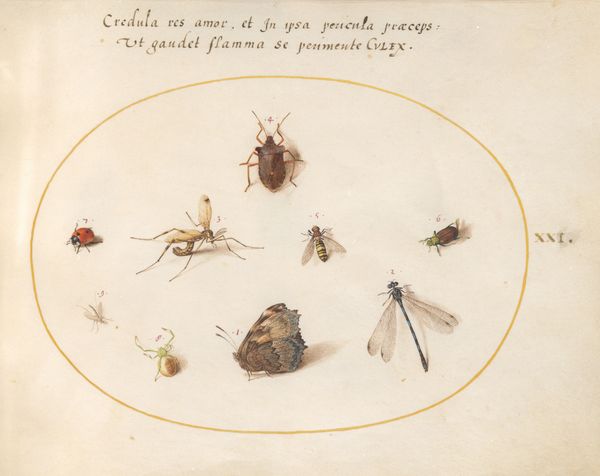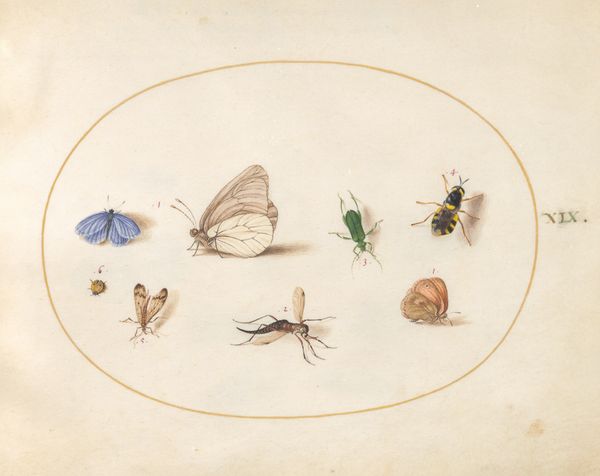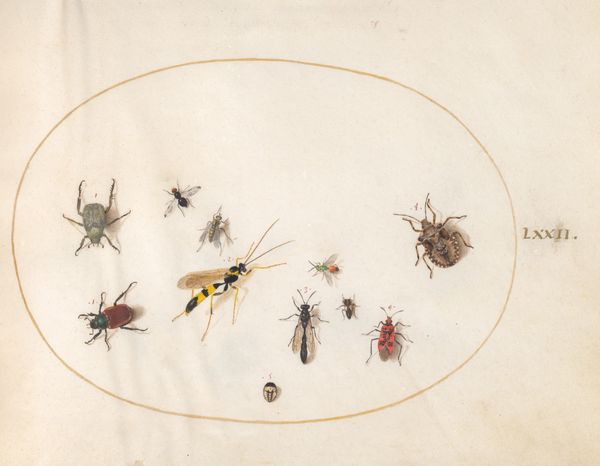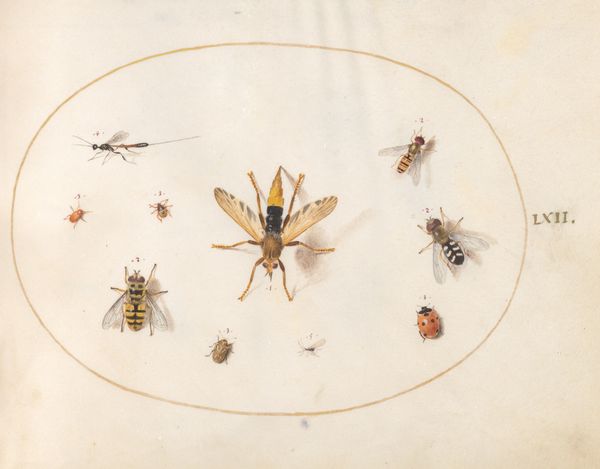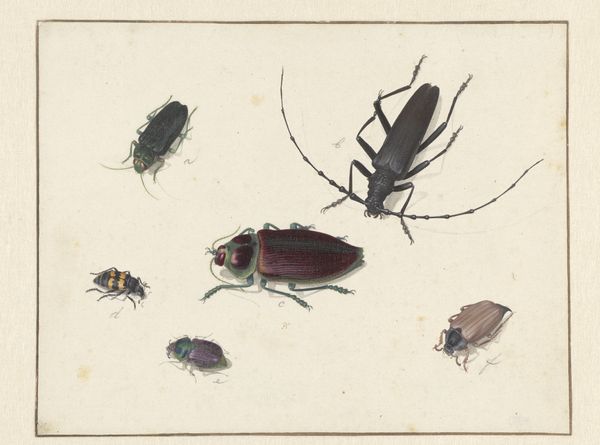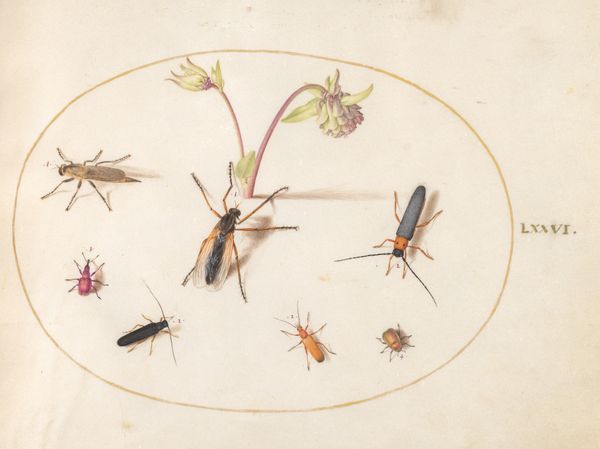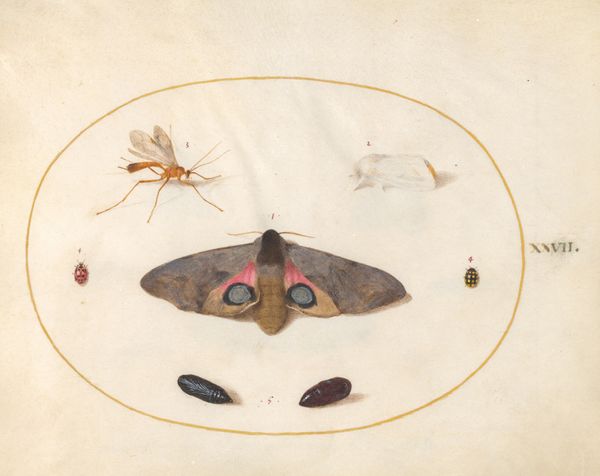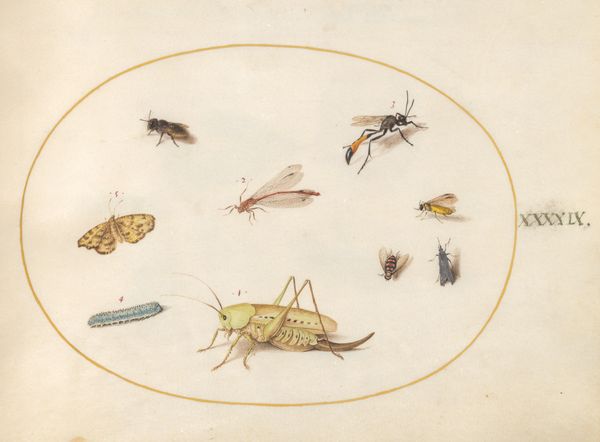
Plate 36: Three Large Spiders and One Small Spider c. 1575 - 1580
0:00
0:00
drawing, watercolor
#
drawing
#
11_renaissance
#
watercolor
#
botanical drawing
#
northern-renaissance
#
miniature
Dimensions: page size (approximate): 14.3 x 18.4 cm (5 5/8 x 7 1/4 in.)
Copyright: National Gallery of Art: CC0 1.0
Editor: So, here we have "Plate 36: Three Large Spiders and One Small Spider," a watercolor drawing by Joris Hoefnagel from around 1575 to 1580. They are so realistically rendered it makes my skin crawl! What's your take on this creepy-crawly work? Curator: Ah, yes! It's wonderfully unsettling, isn't it? Hoefnagel had this incredible eye, turning what most find repulsive into an object of beauty and intense scrutiny. What I love most is how he invites us to reconsider our perspective, to marvel at the intricate details often overlooked. They become characters, little actors in a drama we can only imagine. Doesn’t it make you think differently about your own personal biases? Editor: Definitely! I mean, they’re just… spiders. But you’re right, they’re so detailed that they demand attention, and almost, like, respect? Why choose spiders though? Was there something symbolic about them back then? Curator: I wonder! It's the late Renaissance - the Age of Exploration; the rise of science and natural history. Perhaps Hoefnagel felt drawn to exploring what's right under our feet. The miniature form itself seems to echo that: it asks us to lean in close, as a naturalist would. Do you think that sense of discovery extends beyond the purely scientific for him? Editor: That’s a good point – I suppose, it suggests that even in the smallest, most easily dismissed creatures, there is a whole universe waiting to be understood. It makes me want to grab a microscope. Curator: It's almost alchemical, isn't it? Taking the base and turning it into something precious just by really *seeing* it. I'll never look at spiders the same way! Editor: Me neither! Who knew spiders could be so… captivating?
Comments
No comments
Be the first to comment and join the conversation on the ultimate creative platform.
